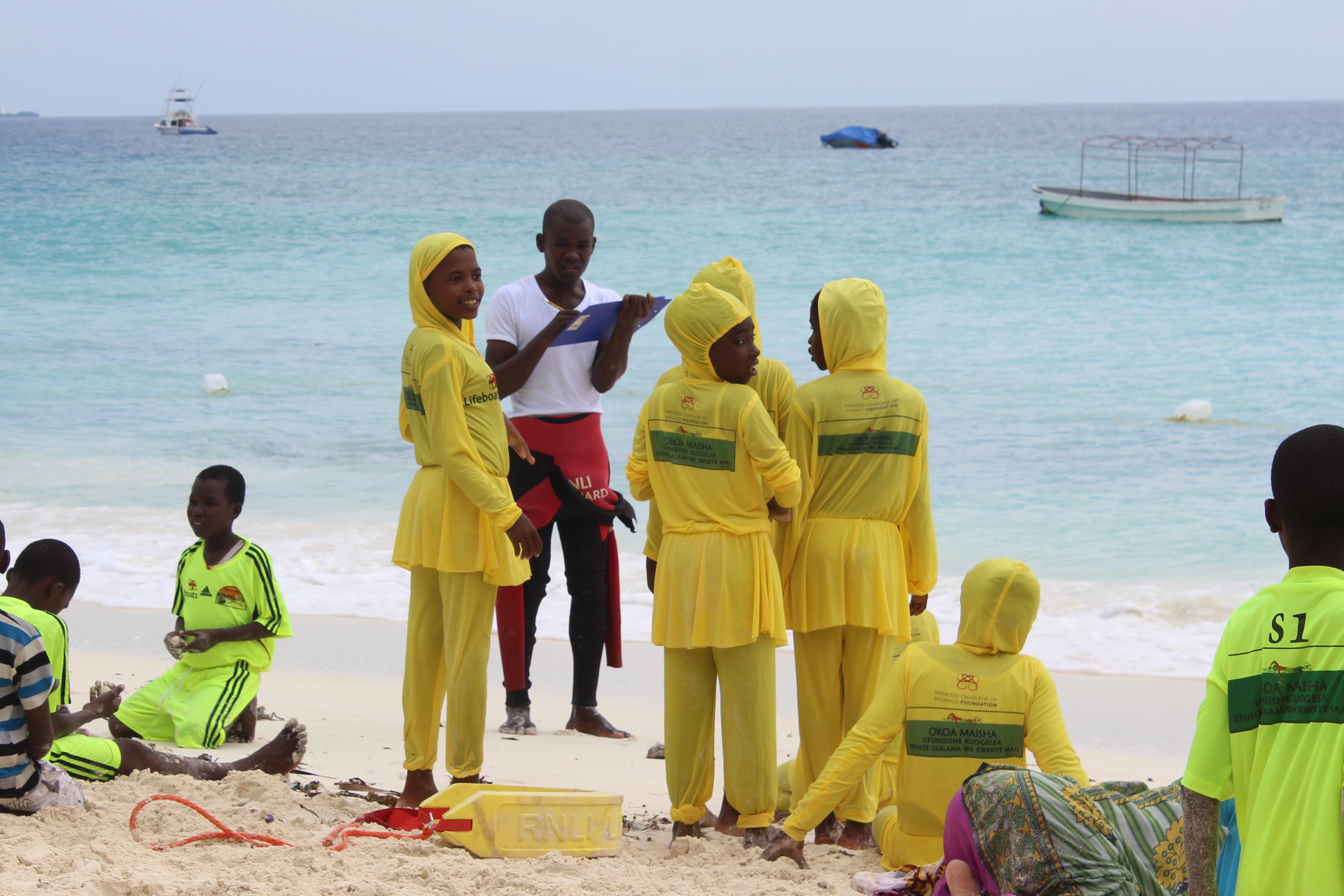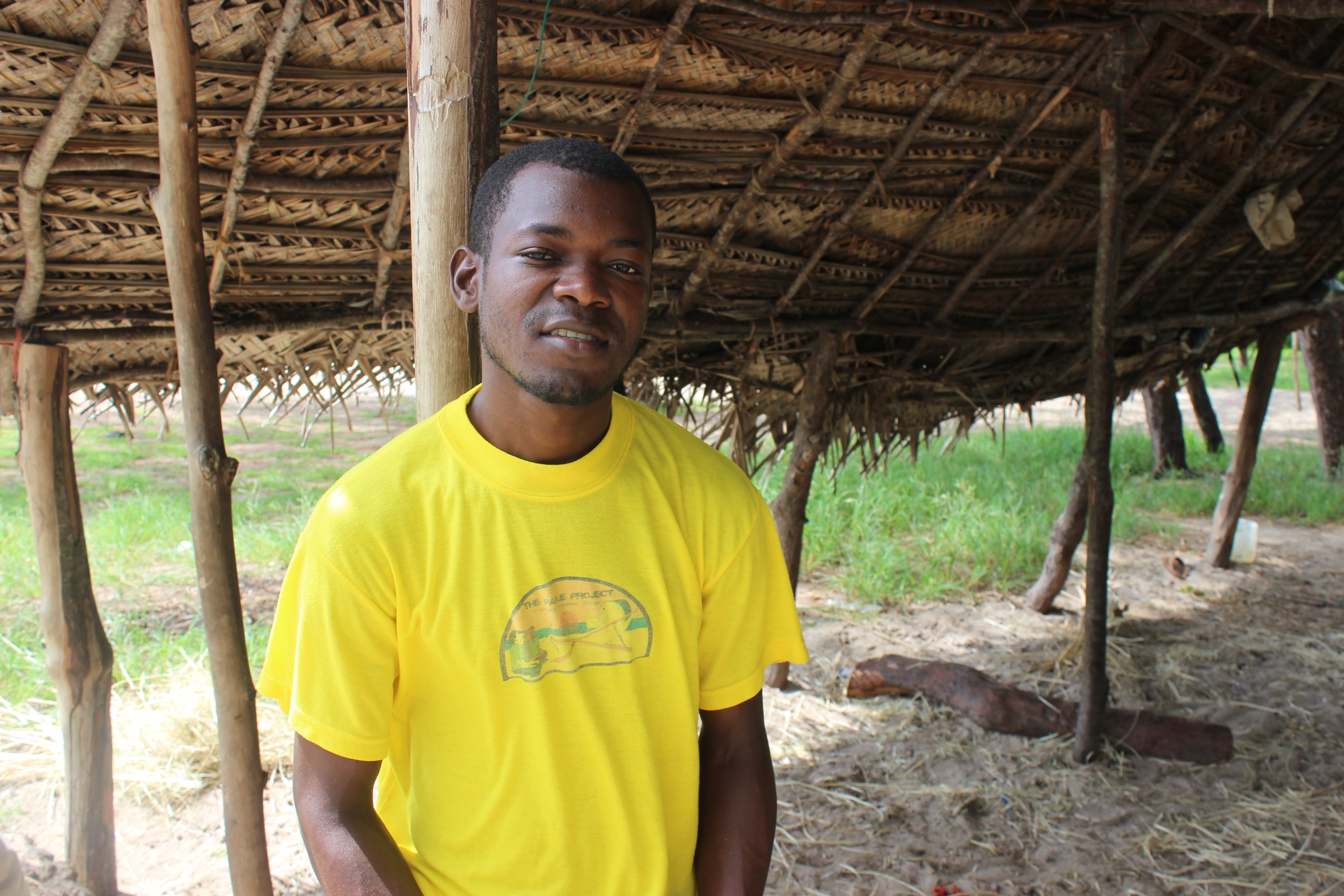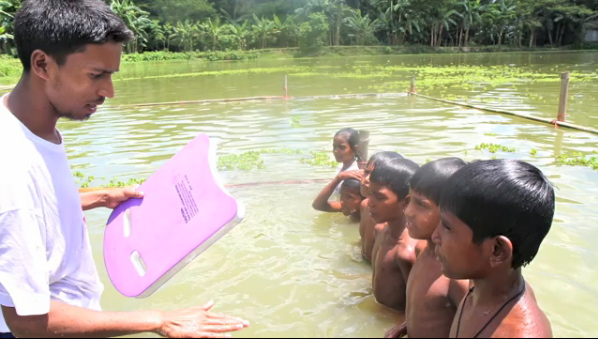Lesson 1: Launch (warmup):
Objective: Learn about the importance of water safety and collect class data on swimming involvement.
- Make a list of the ten things you most like to do in the summer. What are the top ten most popular activities in the class? Take a vote.
- Order each activity (110) from safest to most likely to cause injury. Give evidence for your opinion.
- Research safety statistics in your community. Compare your lists.
- Read and discuss this the following information from Claire Elizabeth Felter, a Student Fellow at the Pulitzer Center on Crisis Reporting: In its 2014 global report on the issue, the World Health Organization estimated that drowning causes 372,000 deaths each year. That's 42 people who die each hour from drowning, despite the widespread availability of prevention strategies. Other data suggests the drowning rate may be four or fimes the World Health Organizations estimate. Although drowning is a leading cause of death for people under the age of 25 in low and middleincome countries, the problem has received little attention as a public health issue until recently. A number of other globally significant matters, including mass migration and climate change, are bringing to the forefront the significance of drowning in many regions around the world.
- Read and discuss the following information from the Centers for Disease Control and Prevention: Every day, about ten people die from unintentional drowning. Of these, two are children aged 14 or younger. Drowning ranks fifth among the leading causes of unintentional injury death in the United States. For more information click here.
- Take a survey using Google Forms or by writing anonymously on a sheet of paper. Answer the following questions:
- Do you know how to swim?
- If yes, why did you learn? If no, why do you think you didn't learn?
- Are you aware of any life saving strategies (water rescue, CPR, etc)?
- As a class, discuss the collected data. What surprised you? What does the information mean? Does any action need to be taken? Brainstorm a list.
Section1:
Investigate the World: Investigate the world beyond your immediate environment
Standards:
CCSS.ELALITERACY.RH.68.4: Determine the meaning of words and phrases as they are used in a text, including vocabulary specific to domains related to social studies.
CCSS.ELALITERACY.RI.68.1: Cite the textual evidence that most strongly supports an analysis of what the text says explicitly as well as inferences drawn from the text.
Objective: Investigate your world through learning about the importance of swimming programs and water safety in Bangladesh and Zanzibar. Read closely and analyze words to find answers to explicit and implicit questions, and draw inferences to understand the meaning of presented information.
- Search for 1015 minutes for information on the country Bangladesh. Use tools and websites such as Wikipedia, Google Maps, Google Earth, images, and more to explore.
- List what you learned in your notes or as a class.
- How is Bangladesh similar to where you live?
- How is Bangladesh different than where you live?
- Read the information and watch the video: Bangladesh: Teaching Swimming, Saving Lives by Jon Sawyer. Then, read the article: Bangladeshi Swimming Program Seeks to Combat TooCommon Drowning Deaths by Kem Sawyer. Answer the following questions in your notes or as a class:
- What is the is the most important information from the video?
- Why are swimming lessons so important in Bangladesh?
- What is one of the biggest hazards in Bangladesh today?
- Why are children divided into two groups: 14 year olds, and 4 and over? What are the main goals of each group?
- How are the programs kept at a low cost? Why do you think that is important?
- Why is teaching swimming likened to be a vaccine?
- Were the pilot programs successful? What is the evidence?
- Search for 1015 minutes for information on Zanzibar, a semiautonomous part of Tanzania in East Africa. Use tools and websites such as Wikipedia, Google Maps, Google Earth, images, and more to explore.
- List what you learned in your notes or as a class.
- How is Zanzibar similar to where you live?
- How is Zanzibar different than where you live?
- In what ways are Bangladesh and Zanzibar similar, different?
- Read the article: Zanzibar: NGO Helps Kids Get Serious about Their Swimming by Claire Elizabeth Felter. Answer the following questions in your notes or as a class:
- Why do you think knowing how to survive in water is not as common as attaining basic swimming skills?
- What are NGO, or nongovernment organizations? What role do they play in society?
- How does the UK charity Royal National Lifeboat Institution support boys in the village of Kendwa?
- Look at the pictures that accompany the article and carefully read the captions. What new information did you learn about the story through the images or the text?
- Does the program look successful? Use evidence from the article and pictures to support your opinion.
Section 2: Recognize Perspectives: Recognize your own and others' perspectives.
Standards:
CCSS.ELALITERACY.SL68.1.D: Acknowledge new information expressed by others, and, when warranted, qualify or justify their own views in light of the evidence presented.
Objective: Learn about different aspects of swimming and water safety programs. Recognize your own and others' perspectives on these ideas and identify influences on those perspectives. Articulate new information, qualify your views, and acknowledge new information presented by others.
- Choose one of three pieces to read and offer opinions on:
- Are New Bathing Suits Helping Zanzibari Girls Learn to Swim (and video)
- Zanzibar Swim Teacher Looks to Boost Female Enrollment
- Zanzibar Divers Take on Role of Ocean First Responders
- Read the article you selected.
- Take about three minutes to write down your initial responses and reactions to each of the following statements from the article:
- Are New Bathing Suits Helping Zanzibari Girls Learn to Swim
- On the islands of Zanzibar, swimming has been almost exclusively a male
- On the islands of Zanzibar, where an estimated 98 percent of the
- To allow girls to participate in an aquatic survival program, local NGO
- The bathing suits cover the girls' legs and arms and have hoods to cover
- In other villages, such as Kendwa, where the NGO is expanding its program and doesn't have as close an association with community leaders, girls have yet to be included in the training.
- Zanzibar Swim Teacher Looks to Boost Female Enrollment
- "I went to the beach to play in water, but I wasn't knowing how to swim,"says Haji. "I was following my friends because they already knew how to swim and they taught me how to swim.
- But the swimming that Haji was doing as a child wasn't the kind of
- The coming of tourism was a new culture here. They thought if girls come
- This included the wearing of bathing suits with little coverage by foreign
- But it was only after long discussions with community leaders and school teachers in Nungwi, and assurance that their bodies and hair would be covered by a speciallydesigned swim uniform, that girls were encouraged to sign up for the training sessions.
- Zanzibar Divers Take on Role of Ocean First Responders
- In the months after the disasters, the government received a number of
- There are more than 60 members across the islands, mostly on Unguja
- Taking action, though, is not that easy. The group does not have much equipment to call its own, so Hemedi will go to one of the dive centers on the beach where he is wellknown to request a boat.
- To get the information, it's there happening, but to start to go to save people, they do not go quickly...says Hemedi. Even one, two hours. The slowness to react can mean more lives lost.
- Disaster management is not only for governmentthere needs to be cooperation with corporations, international organizations, civil society organizations.
- Partner with someone who has read and wrote about the same article. Compare your perspectives on each of the items.
- With your partner, discuss:
- What is your overall perspective of the article?
- What do you think caused you to have those views?
- How similar is your perspective to your partner's?
- What do you think influenced the views of your partner?
- For any major differences in opinion, can you understand why those differences exist?
- If time allows, rotate to partner up with someone who has read a different article.
- First, start with a summary of your article and then repeat the 5 partner discussion questions above. Rotate a third time if possible until each of the articles are discussed.
- Are New Bathing Suits Helping Zanzibari Girls Learn to Swim
Section 3:
Take action: Translate your ideas into appropriate actions to improve conditions.
Communicate ideas: Communicate your ideas effectively with diverse audiences.
Standard:
CCSS.ELALITERACY.W.68.1 Produce clear and coherent writing in which the development, organization, and style are appropriate to task, purpose, and audience.
CCSS.ELALITERACY.SL.7.4: Present claims and findings, emphasizing salient points in a focused, coherent manner with pertinent descriptions, facts, details, and examples; use appropriate eye contact, adequate volume, and clear pronunciation.
Objective: Use knowledge of the importance of swimming skills and water safety to to take action to improve conditions. Identify opportunities, assess options, and plan actions based on potential for impact. Use clear writing, including strong evidence, to spread your message.
- Read the article Unintentional Drowning: Get the Facts by the Center for Disease Control and Prevention.
- Review class survey data on swimming abilities and action plan ideas.
- In small groups brainstorm a list of opportunities, based on the article and class data, to improve conditions. Then, create a class brainstorm.
- As a class, assess the options and vote on actions based on their potential for impact.
- Create an action plan.
- Use clear writing, including strong evidence, to spread your message. Consider multiple perspectives on your ideas.
- Implement the action plan.
- After implementation, reflect on your personal contribution to the improvement.
Some ideas to get you started:
- Work with local organizations, like park districts, to lower the cost of swimming programs for lowincome families
- Organize CPR training for your class or your community
- Home water safety for small children
- Working with local organizations, like park districts, to lower the cost of swimming programs for lowincome families
- Babysitting tips for students
Students will learn about the importance of water safety and collect class data on swimming involvement.
REPORTING FEATURED IN THIS LESSON PLAN
-
×
 English
English






